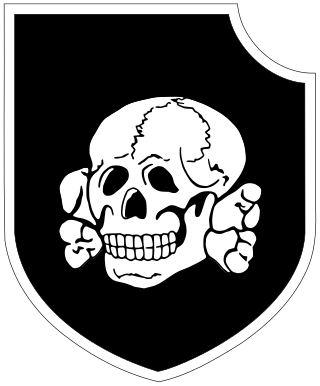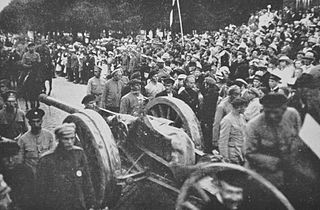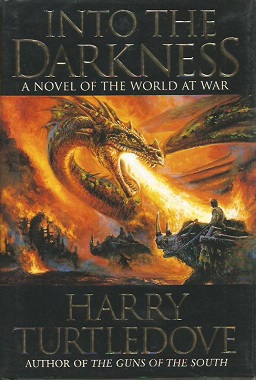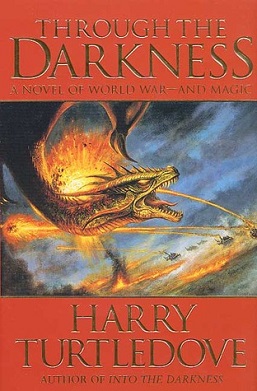
The Third Battle of Kharkov was a series of battles on the Eastern Front of World War II, undertaken by German Army Group South against the Soviet Red Army, around the city of Kharkov between 19 February and 15 March 1943. Known to the German side as the Donets Campaign, and in the Soviet Union as the Donbas and Kharkov operations, the German counterstrike led to the recapture of the cities of Kharkov and Belgorod.

Operation Tempest was a series of uprisings conducted during World War II against occupying German forces by the Polish Home Army, the dominant force in the Polish resistance.
The 10th Princess Mary's Own Gurkha Rifles,, was originally a rifle regiment of the British Indian Army. The regiment was formed in 1890, taking its lineage from a police unit and over the course of its existence it had a number of changes in designation and composition. It took part in a number of campaigns on the Indian frontiers during the 19th and early 20th centuries, before fighting in the First World War, the Third Anglo-Afghan War and the Second World War. Following India's independence in 1947, the regiment was one of four Gurkha regiments to be transferred to the British Army. In the 1960s it was active in the Malayan Emergency and Indonesian Confrontation. It was amalgamated with the other three British Gurkha regiments to form the Royal Gurkha Rifles in 1994.

The 3rd SS Panzer Division "Totenkopf" was an elite division of the Waffen-SS of Nazi Germany during World War II, formed from the Standarten of the SS-TV. Its name, Totenkopf, is German for "death's head" – the skull and crossbones symbol – and it is thus sometimes referred to as the Death's Head Division.
Darkness, also known as World at War, is a series of six fantasy novels by Harry Turtledove.

The Latvian War of Independence, sometimes called Latvia's freedom battles or the Latvian War of Liberation, was a series of military conflicts in Latvia between 5 December 1918, after the newly proclaimed Republic of Latvia was invaded by Soviet Russia, and the signing of the Latvian-Soviet Riga Peace Treaty on 11 August 1920.

The Battle of Vyborg Bay was fought in the Finnish-Soviet Continuation War (1941–1944).
The Battle of Occhiobello was fought on 8 April – 9 April 1815 and was the turning point of the Neapolitan War. Joachim Murat, King of Naples was repulsed by an Austrian force under the command of Johann Frimont whilst trying to cross the bridge over the Po River at Occhiobello. Following the battle, the Austrians would not lose an engagement for the remainder of the war.

Into the Darkness (1999) is a fantasy novel by American writer Harry Turtledove, the first book in the Darkness series.

Through the Darkness (2001) by Harry Turtledove is the third book in the Darkness series.

Rulers of the Darkness (2002) is the fourth book in The Darkness Series by Harry Turtledove.

Out of the Darkness (2004) by Harry Turtledove is the sixth and final book in the Darkness series.

The Second Battle of Naktong Bulge was an engagement between United Nations Command (UN) and North Korean forces early in the Korean War from September 1 to September 15, 1950, along the Naktong River in South Korea. It was a part of the Battle of Pusan Perimeter, and was one of several large engagements fought simultaneously. The battle ended in a victory for the United Nations after large numbers of United States Army (US) troops repelled a strong Korean People's Army (KPA) attack.

The Christmas Battles were offensive operations of the Russian army and Latvian units during World War I in the area of Jelgava, Latvia, by the Russian 12th Army of the Northern Front. They took place from December 23 until December 29, 1916 according to the calendar used in Russia at the time, The Army was commanded by Gen. Radko Dimitriev; it was opposed by the 8th German Army.

The evacuation of La Romana's division in August 1808 was a military operation in which a division of troops belonging to the Kingdom of Spain and commanded by Pedro Caro, Marquis of La Romana defected from the armies of the First French Empire. The Spanish troops were part of the Imperial forces in Denmark, which were under the leadership of Marshal Jean-Baptiste Bernadotte. Most of the Spanish troops were successfully evacuated by the British navy and shipped to Santander, Spain to fight against France in the Peninsular War.
The 55th Rifle Division that served as a Red Army rifle division during the Great Patriotic War formed for the first time in September 1925 as a territorial division headquartered at Kursk. When the German invasion began the unit was as Slutsk, but soon came under attack from their armored spearheads and lost most of its strength within days, and was eventually encircled and destroyed at Kiev. A new division was formed along the Volga in December, and was soon sent north to join in the fighting around Demyansk until early 1943. In many respects the 55th was a hard-luck unit; after being destroyed once, it drew assignments to mostly secondary fronts in areas where, due to the terrain and other circumstances, no unit could distinguish itself. By early 1944, the division was reduced to minimal strength for an active formation, and after making some key gains in the pursuit phase of Operation Bagration it was transferred north to the Baltic States and then disbanded to provide replacements for the other units in 61st Army. Elements of the disbanded division were repurposed to other roles in coastal defense and as a naval base garrison, continuing in service until 1956.
The 373rd Rifle Division was raised in 1941 as an infantry division of the Red Army, and served for the duration of the Great Patriotic War in that role. It began forming in August 1941 in the Urals Military District. It was moved to the front northwest of Moscow while still trying to complete its training and went straight into action in mid-December during the winter counteroffensive. Until May 1943, it was involved in the bloody fighting around the Rzhev salient. After a period in reserve for rebuilding, the division's combat path shifted southward when it was assigned to 52nd Army, where it remained for the duration of the war. It won a battle honor in eastern Ukraine, then fought across the Dniepr River late that year, and was awarded the Order of the Red Banner for its successes. Following this it advanced through western Ukraine in the spring of 1944, then into Romania in the summer, where it played a major role in the second encirclement and destruction of the German 6th Army. After again moving to the reserves the division shifted northwards with its Army to join 1st Ukrainian Front, fighting through Poland, eastern Germany and into Czechoslovakia. By then the 373rd had compiled an enviable record, and went on to serve briefly into the postwar era.
The 9th Guards Rifle Division was reformed as an elite infantry division of the Red Army in November, 1941, based on the 1st formation of the 78th Rifle Division and served in that role until after the end of the Great Patriotic War. It was first assigned to the 16th Army just before the start of the winter counteroffensive west of Moscow before being very briefly reassigned to the 33rd Army and then to the 43rd Army during the fighting around Rzhev. In May, 1942 it was awarded the Order of the Red Banner for its services, one of the first rifle divisions to be so recognized. After partially rebuilding it was railed south to Southwestern Front to help meet the German summer offensive. It gave very creditable service in the 38th Army as an infantry division facing armored divisions but suffered significant losses before it was returned to the Moscow Military District in September. In November it was assigned to Kalinin Front and played an important role in the liberation of Velikiye Luki during the winter, primarily in helping to block several attempts to relieve the besieged city. It remained in that Front for most of the rest of the war, for the most part in both the 5th and 2nd Guards Rifle Corps, before moving with the latter to 6th Guards Army, where it remained for the duration, fighting through the Baltic states during the summer and autumn offensives of 1944. In March, 1945 it joined the Courland Group of Forces of Leningrad Front on the Baltic coast containing the German forces encircled in northwest Latvia. Following the German surrender it was disbanded later in 1945.
The 242nd Rifle Division was the lowest-numbered infantry division of the Red Army to be formed from scratch following the German invasion of the USSR. It was largely based on what would become the shtat of July 29, 1941 and was very quickly assigned to the new 30th Army of Western Front. Despite many shortages of equipment and specialist personnel, and a near-complete absence of formation training, the division joined the active army on July 15, thrown into the fighting near Smolensk. In late August and early September it took part on the Front's offensives toward Dukhovshchina, in an ultimately unsuccessful effort to encircle and destroy a large part of the German 9th Army. At the start of Operation Typhoon on October 2 it was defending part of the sector attacked by 9th Army and 3rd Panzer Group south of Bely and was quickly overwhelmed. After fighting in encirclement for most of the rest of the month its remaining men were able to break out and reach Soviet-held territory, but the losses were to too great to justify rebuilding and the division was disbanded.












